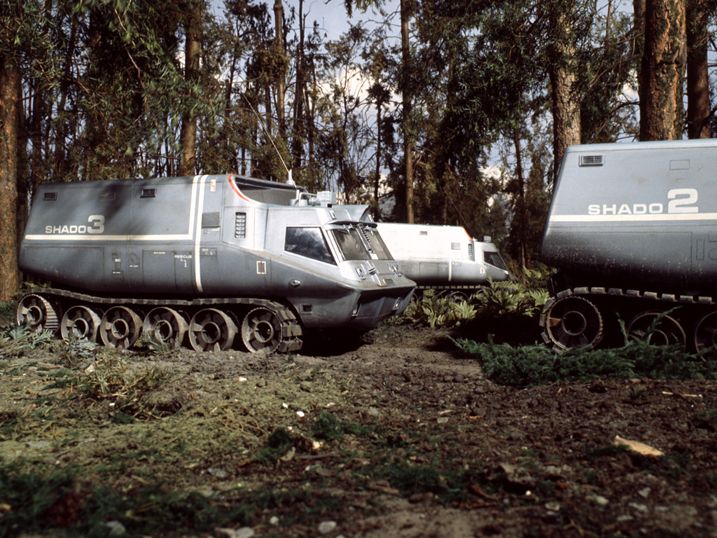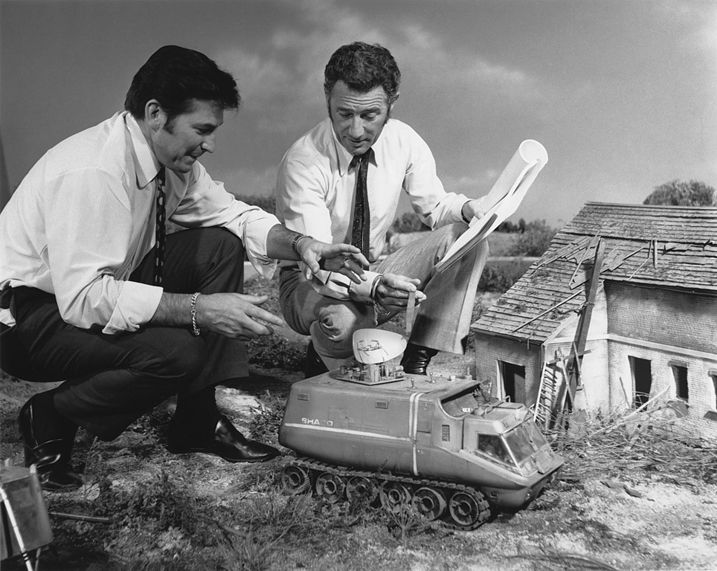As we all know, the Enterprise was filmed before a blue screen. An animated star field would be tricked in to give the ship "speed references." Globe-like planet models were filmed separately, also in front of a blue screen. So a shot of the ship orbiting a planet would really be three separate films: the ship, the planet, and the stars, all composited into one picture.
Lost in Space's fx men shot the Jupiter 2 in front of flat paintings, so the whole effect was done in-camera. It was faster, cheaper, and the finished film never had any matte lines or seams. For the period, it looked pretty good!

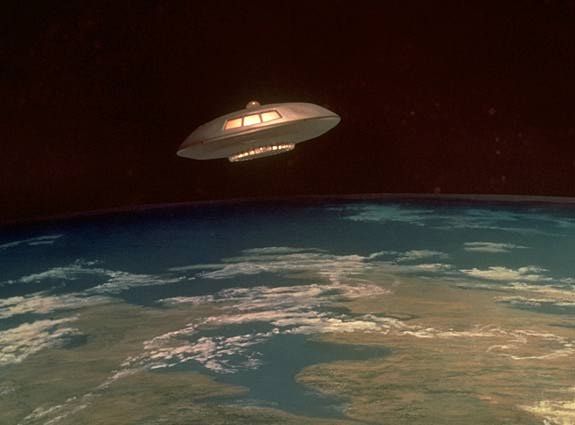
When the Jupiter 2 was shown landing, again it was all done in-camera rather than composited (this time with the four-foot model instead of the little one):
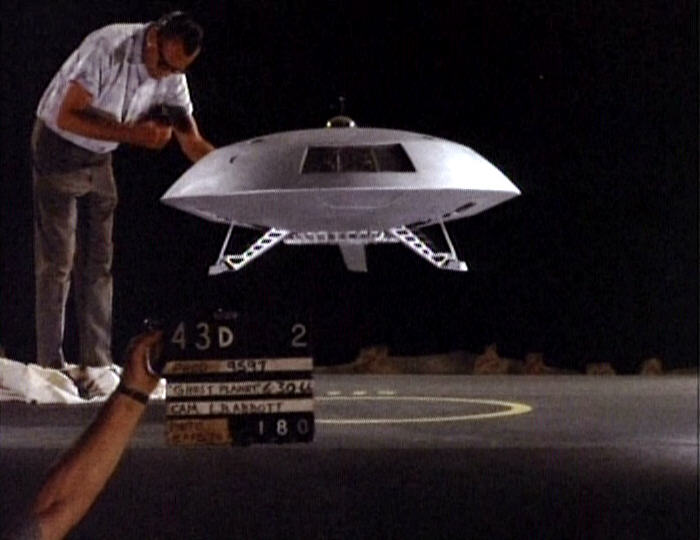
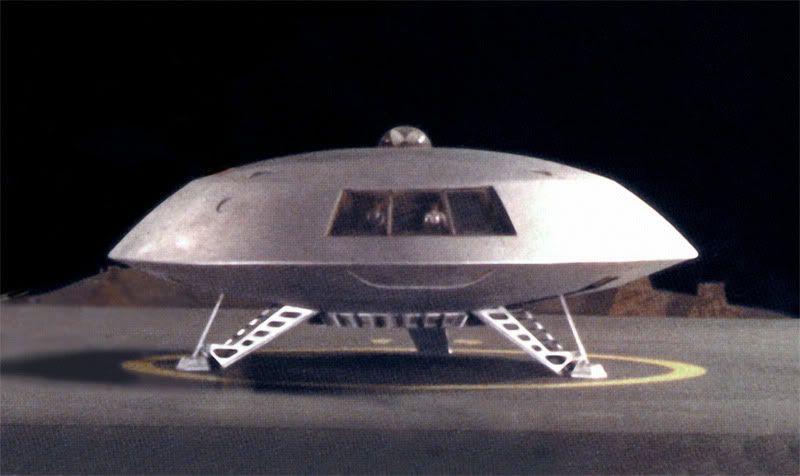
Imagine if "The Galileo Seven" episode had shown the shoebox-sized shuttlecraft miniature landing in a diorama set. The whole feeling of the episode would be different, and possibly not for the better if it looked too fake, but the point is, Star Trek didn't have that choice.
Shots of the Jupiter 2 miniature flying toward its crash landing in "Island in the Sky" were among the most exciting moments of the episode, even though (as with helicopter crash scenes throughout film history) the impact took place just over that hill. If "The Galileo Seven" could have done as much, and prudently looked away from the hard-to-realize landing itself, the episode would have been better without a doubt.
In the pre-CBS Digital version (yeah, the real version) of "Charlie X," when the Enterprise is said to be "maneuvering to come alongside cargo vessel Antares," all you see is the Enterprise, and it is just stock footage from "The Cage."
Maybe the whole blue-screen compositing strategy was a mistake, because it ate up so much time and money that, overall, fewer fx could be created.
Lost in Space's fx men shot the Jupiter 2 in front of flat paintings, so the whole effect was done in-camera. It was faster, cheaper, and the finished film never had any matte lines or seams. For the period, it looked pretty good!


When the Jupiter 2 was shown landing, again it was all done in-camera rather than composited (this time with the four-foot model instead of the little one):


Imagine if "The Galileo Seven" episode had shown the shoebox-sized shuttlecraft miniature landing in a diorama set. The whole feeling of the episode would be different, and possibly not for the better if it looked too fake, but the point is, Star Trek didn't have that choice.
Shots of the Jupiter 2 miniature flying toward its crash landing in "Island in the Sky" were among the most exciting moments of the episode, even though (as with helicopter crash scenes throughout film history) the impact took place just over that hill. If "The Galileo Seven" could have done as much, and prudently looked away from the hard-to-realize landing itself, the episode would have been better without a doubt.
In the pre-CBS Digital version (yeah, the real version) of "Charlie X," when the Enterprise is said to be "maneuvering to come alongside cargo vessel Antares," all you see is the Enterprise, and it is just stock footage from "The Cage."
Maybe the whole blue-screen compositing strategy was a mistake, because it ate up so much time and money that, overall, fewer fx could be created.
Last edited:



